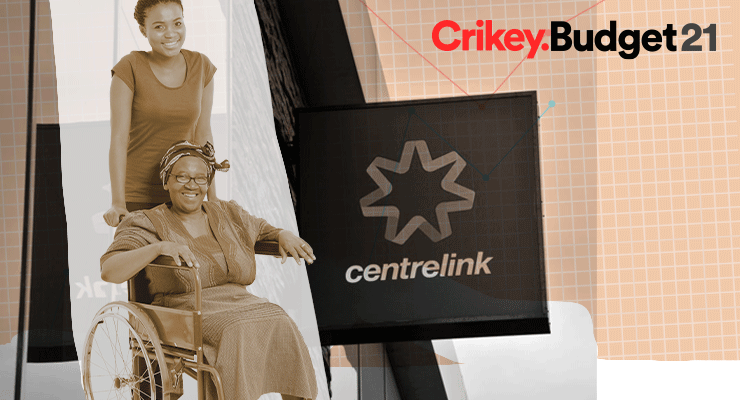
This isn’t an austerity budget, but there is no massive spending blowout to prop up Australia’s welfare system. While the government has shelled out extra money for mental health services, there are cuts to the Department of Social Services.
The National Disability Insurance Scheme (NDIS) is set to get a little more cash than planned — but will also need to support more people than expected — while its watchdog, the already overwhelmed NDIS Quality and Safeguards Commission, will see funding and staff cuts.
Disability sector
Despite the number of Australians on the NDIS and the growing number of complaints recieved by the Quality and Safeguards Commission, the commission is set to have its staffing levels and funding slashed.
In 2020-21, the commission received $101 million. This will be cut down to $93 million this year, with the average staffing level brought down from 350 people to 342.
This is a concern: Crikey has previously covered allegations of abuse and neglect going dismissed and ignored by the commission, with staff walking off the job in tears due to the workload. Abuse of people with disabilities is high, and without an effective watchdog, dodgy providers and neglectful staff are likely to continue operating.
Fear-stoking claims of an NDIS “cost blowout” have been repeated by politicians, with NDIS Minister Linda Reynolds questioning whether the scheme is making people less functional over time (it isn’t), and NDIA CEO Martin Hoffman saying he expected more people to “exit” the scheme. (Given that to be eligible for the scheme participants have to prove they have a permanent disability, this is another way of saying he thought more people would die
There was a $1.6 billion NDIS underspend in 2019-20, along with a $4.6 billion underspend in 2018-19, which helped prop up a budget surplus.
The NDIA was over budget by $1.6 billion last year, with funding estimated to increase by another $3.8 billion this year, reaching a funding total of $30.9 billion. It will only grow by $1 billion between 2021-22 and 2024-25, which is about in line with estimates.
The scheme will also support more people than originally anticipated — 500,000 by 2023 instead of the 441,000 as originally thought.
These costs don’t address outcomes of the NDIS, such as how much money is saved which would have otherwise been spent on private health, or increased employment numbers for people with disabilities who have work support.
There is also currently no funding to implement the National Disability Strategy, though there are plans to finalise the strategy by the end of this year.
Social services
The Department of Social Services is having its funding slashed following a $50 million underspend. Last year the department got $149.5 million, down from an estimated $154 million. This year it will receive just $130 million, though is still expected to increase its staffing levels by 150 people .
Jobkeeper will be more than halved — from $31 billion last year to $14 billion.
Services Australia, which organises welfare services and payments, will also see cuts, losing $286 million in funding and 800 staff.
Mental Health
Mental health funding is receiving a big boost, with the government investing $525 million into the sector. Mental health issues are estimated to affect five million Australians.
The government will invest $2.3 billion in improved mental health services — which includes new treatment centres, $13.1 million to ReachOut Australia for digital mental health services for young Australians and their parents, and $77.3 million to continue support for existing digital mental health services.
Indigenous Australians
The budget contains relatively few new spending measures specifically targeting Indigenous Australians.
Wage subsidies provided through various job programs (jobactive, Transition to Work and ParentsNext) are being increased to $10,000, and the Local Jobs Program is being extended to 51 employment regions. These programs are targeted specifically at young people, women returning to the workforce, and Indigenous Australians.
As part of the Closing the Gap targets, the government is spending more than $227.7 million on remote service delivery and targeted skills programs.
The fight against family violence in Indigenous communities is getting a small boost. Aboriginal and Torres Strait Islander women and girls are 32 times more likely to be hospitalised due to family violence than non-Indigenous women.
The budget includes $31.6 million in funding over five years for a new dedicated Aboriginal and Torres Strait Islander Personal Safety Survey to understand how communities are impacted, and $57.6 million to work with Aboriginal and Torres Strait Islander communities to break the cycle of violence through community-driven, evidence-based and trauma-informed solutions.








Will a Labor govt. re-fund the ABC?